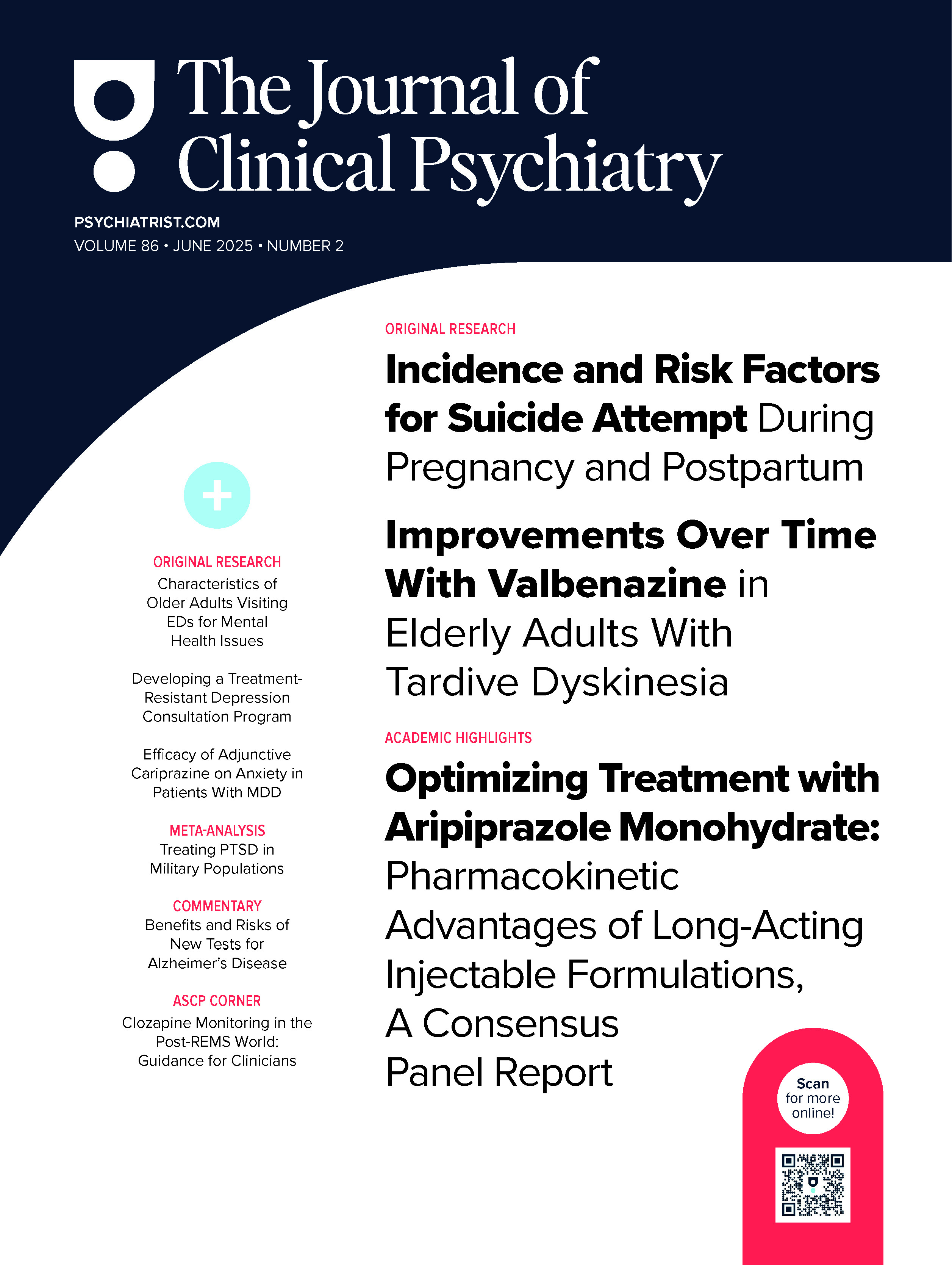Somatic Presentations of Mental Disorders: Refining the Research Agenda for DSM-V
As we move inexorably toward DSM-V, the bases upon which changes will or will not be made are coming under increasing scrutiny. This volume reviews the current research basis of knowledge on those disorders again being referred to as psychosomatic, that is, disorders with symptoms in both the mind/brain realm and the medical realm. It is based on a series of contributions by an international panel of experts who were charged with "inform[ing] revisions of psychiatric diagnostic classification systems" (p xi).
The volume begins with a wonderful historical overview by Donald Oken that helps frame current controversies in the context of 60 years of changing conceptualizations of mental illness and psychiatric nomenclature. Oken notes that DSM-I categorized the psychosomatic disorders on the basis of their presumed etiologies—as "reactions" in which psychological concerns were transformed into somatic complaints via psychodynamic mechanisms. He rightly attributes the psychodynamic formulation to the influence of the Chicago psychoanalyst Franz Alexander, but does not note that the idea that all mental disorders are "reactions" was introduced by Adolf Meyer, who even labeled delirium dysergastic reaction. A major shift to an etiologically agnostic symptom-listing approach came with DSM-III and was carried into DSM-IV, both of which categorized these conditions as "psychological reaction(s) to physical illness."
As Kirmayer and Sartorius note in their chapter, psychosomatic medicine addresses 3 conditions: (1) disorders that have a syndromic set of physical symptoms but for which no pathophysiologic abnormality has been found—fibromyalgia, chronic fatigue syndrome, and irritable bowel syndrome being examples; (2) physical symptoms seen in association with anxiety and depression; and (3) preoccupation with the belief that one is physically ill even though one’s symptoms do not appear to be linked to an underlying physical disease.
These topics are well covered in this volume, but how can these 3 disparate sets of somatic presentations be unraveled or reconceptualized? Two broad approaches are highlighted in this volume. First is the use of a set of research methods. Types of studies reviewed in this volume are epidemiologic (population-based) investigation of associations between mental and physical symptoms, cross-cultural comparison as a means of validating the universality of some clusters, validation of symptom clustering and behavioral consistency by demonstrating (or not finding, in the case of hypothesis rejection) consistency over time, demonstration of associations between biologic markers and specific symptom clusters, and identification of nonuniversal culture-unique syndromes. The second approach to validation relies on treatment response. Three chapters review data and clinical experience that bear on the question of whether there is a set of unifying principles that underlie the treatment of these disparate conditions and might either guide classification or at least justify their being grouped together.
Somatic Presentations of Mental Disorders thus presents a useful summary of current knowledge. As such, it is a good introduction for those considering tackling, from either a research or a clinical standpoint, these prevalent conditions that are associated with significant morbidity and suffering. However, the volume fails to answer the question at the heart of the meeting at which these papers were presented: Whither DSM-V and ICD? Presumably, there were discussions about how to move forward on the question of nomenclature and classification on the basis of these presentations, but no summary of any such discussions or recommendations is presented. The reader is left with nagging questions. Do we know enough to recommend changes based on research? Have we learned from prior attempts at classification by DSM and ICD so that we can avoid the mistakes of the past on the one hand and build upon successes and incremental gains in knowledge on the other? Without a summary chapter to help the reader decide, the answer seems to be "no." I hope that this is the wrong conclusion and that DSM-V will guide both researchers and clinicians in a direction that will improve practice and care, but this volume does not inspire confidence that that is the case.
The proposed revisions to DSM-V that were released after the meeting at which these papers were presented make it clear that DSM-V will be based on the best efforts of those appointed by the American Psychiatric Association to the revision committee. Hopefully, those working on DSM-VI will have a better research basis on which to ground their decisions.
Author affiliation: Department of Psychiatry and Behavioral Sciences, Johns Hopkins University School of Medicine, Baltimore, Maryland. Potential conflicts of interest: None reported.
doi:10.4088/JCP.10bk06464whi
© Copyright 2010 Physicians Postgraduate Press, Inc.

